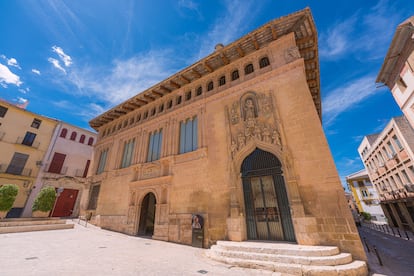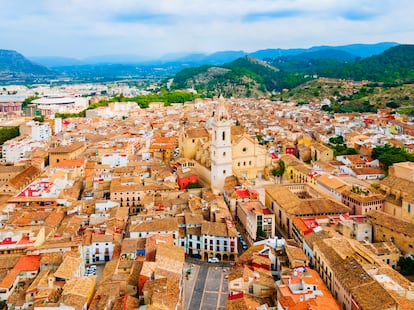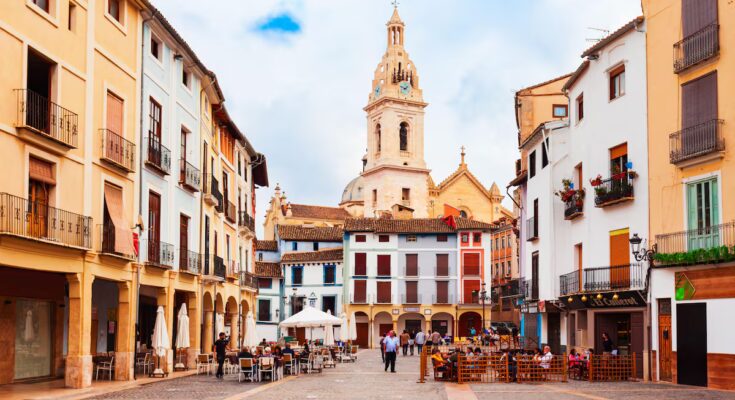In one of his typical lapidary phrases, Winston Churchill said that “the Balkans have a tendency to produce more history than they themselves can consume”. Something similar happens in cities like Xàtiva. Although it is now only the capital of the Valencian region of Costera and barely exceeds 30,000 inhabitants, this town 62 kilometers from Valencia offers several layers of remarkable cumulative temporal sedimentation, including a period as provincial capital (between 1822 and 1833). It all began with the Iberians, who called their primitive locality Saiti, which derives in Latin from Saitabi OR Saetabis. From here comes the cultured demonym “setabense”, although the inhabitants of this locality are better recognized by the name “xativins”.
Xàtiva had the honor of being recognized as a Roman municipality with the name of Saetabis Augustain honor of Emperor Octavius Caesar Augustus. At that time it was an important commercial hub (the Via Augusta ran at its foot), and was known in the Empire for the production of linen and the processing of textiles. With the Muslim conquest its castle returned to its splendor, which still today constitutes its most impressive monument. In the 11th century Ibn Hazm wrote here The dove necklacea love treatise with Platonic influences of enormous significance. The Christian period, which began in the 13th century with the conquest of James I, represents a new era of splendor. Xàtiva becomes the second most important city in the Kingdom of Valencia. Over time he managed 37 municipalities.
In the 18th century, during the War of Succession, the city experienced its most dramatic moment. On 25 April 1707 the troops in favor of Archduke Charles of Austria were defeated at Almansa (63 kilometers from the city). The Austrian had promised to respect the freedoms of the Crown of Aragon, but the game was won by Felipe de Borbón (who would reign in Spain as Felipe V), who eliminated his own right and prohibited the use of the Catalan language. Furthermore, due to Xàtiva’s resistance to his cannons, he set it on fire and completely destroyed it, renaming it San Felipe (sic). That’s why xativins are also known as socarrats (burnt). Over the years, the city recovered, even symbolically: in 1957, the director of the Museu de la Ciutat (in Almodí), Carlos Sarthou, ordered the painting of Philip V by local artist Josep Amorós to be turned upside down. And so it goes. You can begin your visit to Setabo’s rich historical heritage here, to witness the persistent anger of a people against injustice. In the historic center there are numerous monumental monuments, but the collegiate church and the ancient royal hospital undoubtedly stand out.

The collegiate church is also known as La Seu. Construction began in 1596 on the site of the ancient Islamic mosque and was completed only in the 19th century. Numerous pieces of great value are exhibited in the Collegiate Museum, such as some panels of Saint Helena and Saint Sebastian, the altarpiece of Saint Anne, the 14th century Major Cross, the chalice of Callixtus III and the Major Custody of Corpus Domini. The family of the future Borgia (Borgia, in Italian) popes, Calixto III and Alexander VI, came from Aragon but settled in Xàtiva as early as the 13th century, and from here it became one of the most powerful Valencian sagas of all time. The Espai Borja is currently located in the Royal Hospital, located opposite the cathedral temple. This building with a beautiful Renaissance facade was built between the 15th and 16th centuries and, although it was seriously damaged in the fire of 1707, it was rebuilt at the beginning of the 18th century.
Other monuments in the city also await rehabilitation. This is the case of the Royal Monastery of the Assumption – also known as the Monastery of Santa Clara –, located in the charming Calle Montcada. Gothic in style with Baroque elements, it was dynamited during the Civil War and partially demolished, although its facade remained intact. Just on April 25, the Xàtiva City Council announced the conversion of this building into the future Center Raimon d’Activitats Culturals (CRAC), with the aim of consolidating Xàtiva as a cultural capital and paying homage to one of its most illustrious sons.

The singer Raimon (stage name of Ramon Pelegero Sanchis), born on Carrer Blanc in Xàtiva on 2 December 1940, is one of the pillars of Nova Cançó, the movement which, in the 1960s, revitalized Catalan popular music and constituted one of the most persistent headaches of the dictatorship. Despite developing his entire career mainly in Barcelona, Raimon has never forgotten his roots, and now his city wants to reward him with a permanent center dedicated to his legacy and memory.
The visitor who wishes to immerse himself in this cultural background and spend a few days free in Xàtiva must not hesitate: he must stay at the Hotel Montsant. Located a 15-minute walk from the castle, this former Cistercian monastery converted to hotel use is a small orchard with its own microclimate, a paradise in the sense that the Arabs gave to this term: citrus garden. They come from the Todolí Citrus Fundació, the estate that Vicent Todolí (former director of the Tate Modern in London) has in Palmera dedicated to the research and dissemination of agricultural, environmental, historical, culinary and industrial issues linked to the citrus universe. With the fruits of these trees and other products of the sea and the land, Carlos Beltrán, the Montsant chef, creates a magnificent menu.
There are those who prefer to go to Xàtiva in the height of summer, when the Fira d’Agost is celebrated. This Festival of National Tourist Interest, founded in the 13th century, combines fairs, commerce and culture. But the city, also thanks to Montsant, is worth a visit in every season. As an old saying that is difficult to translate goes: “On els frares fan niu, hivern y estiu” (something like if you were to settle where the friars make their nest, in winter and summer). Well, that.



